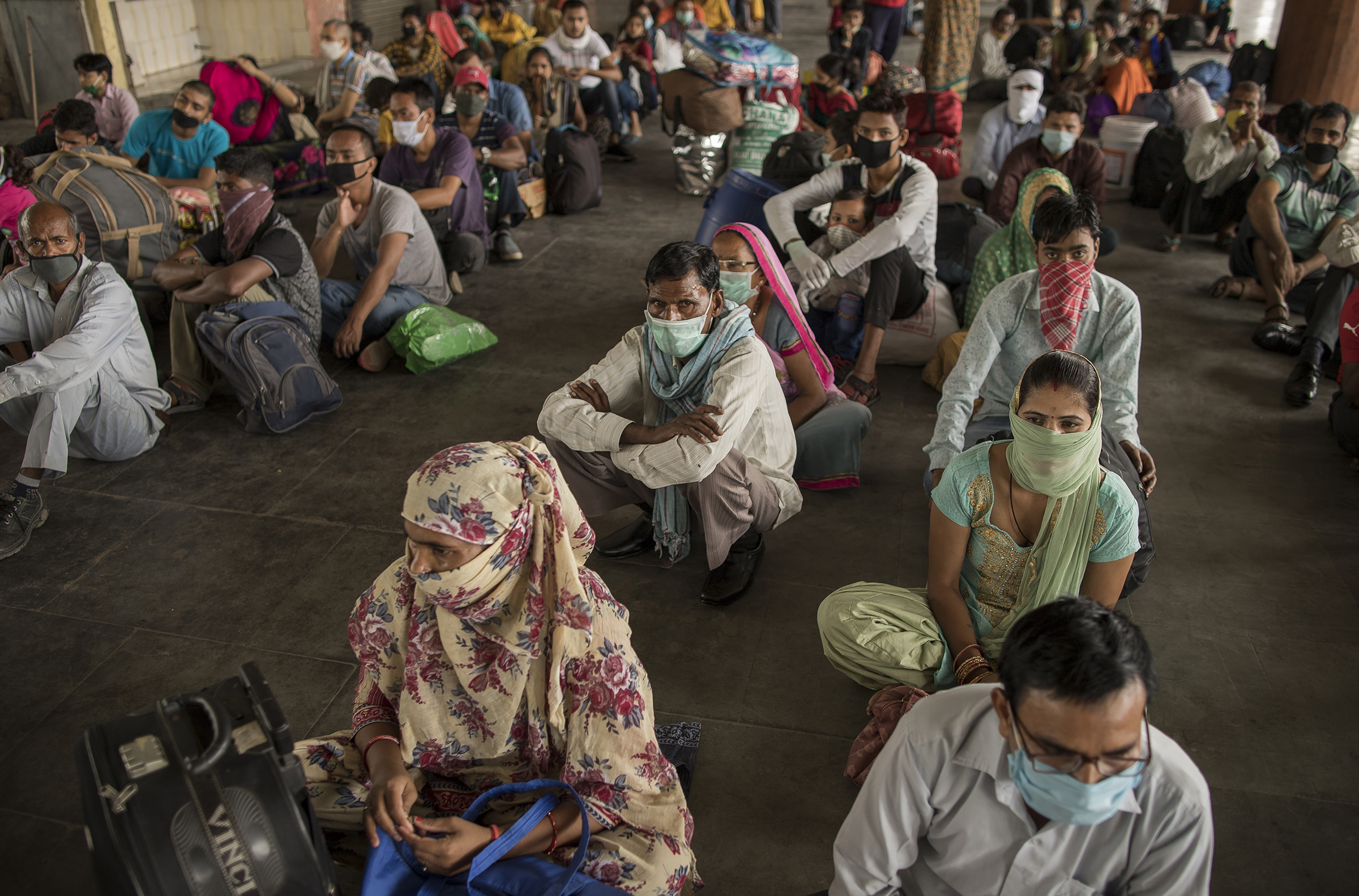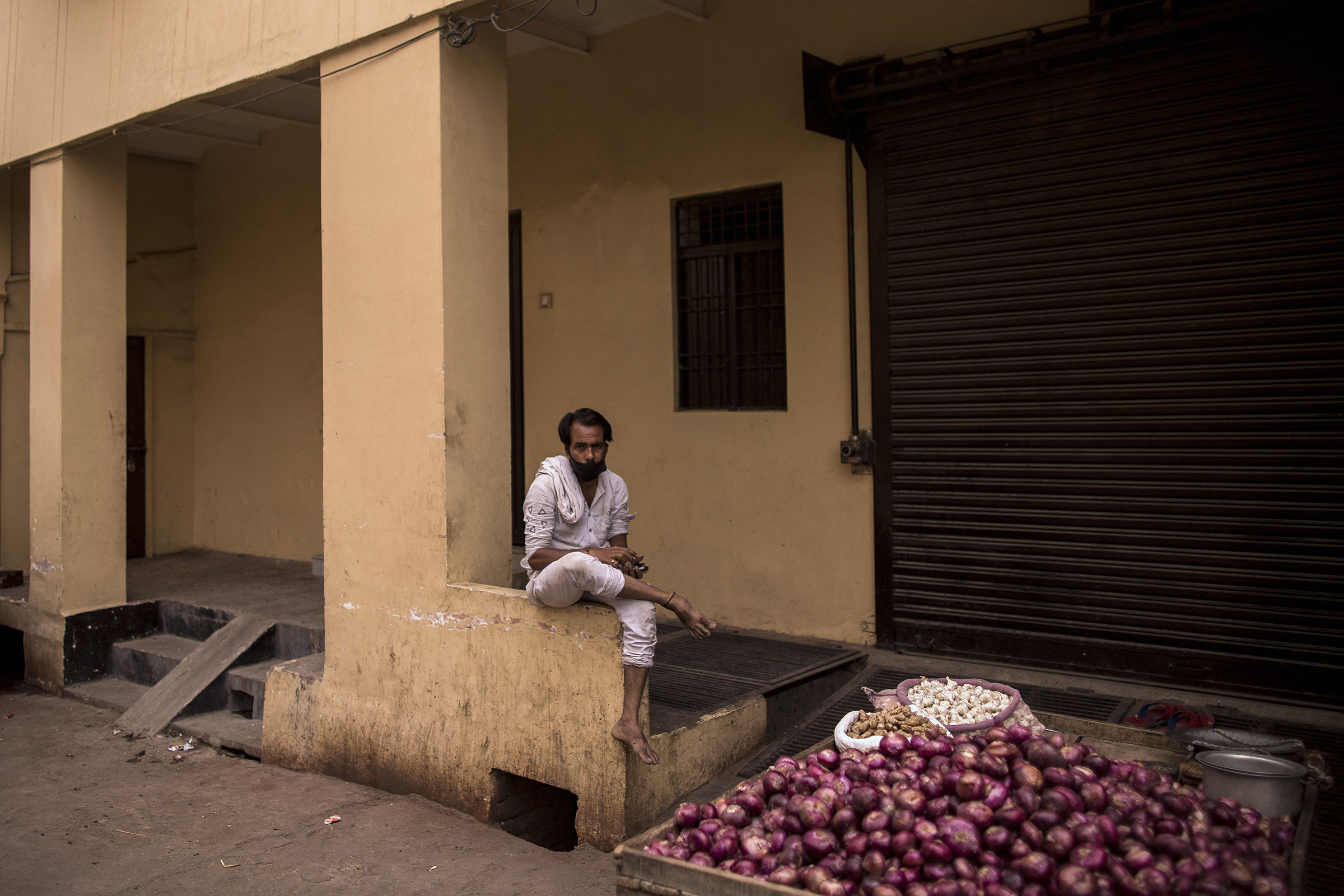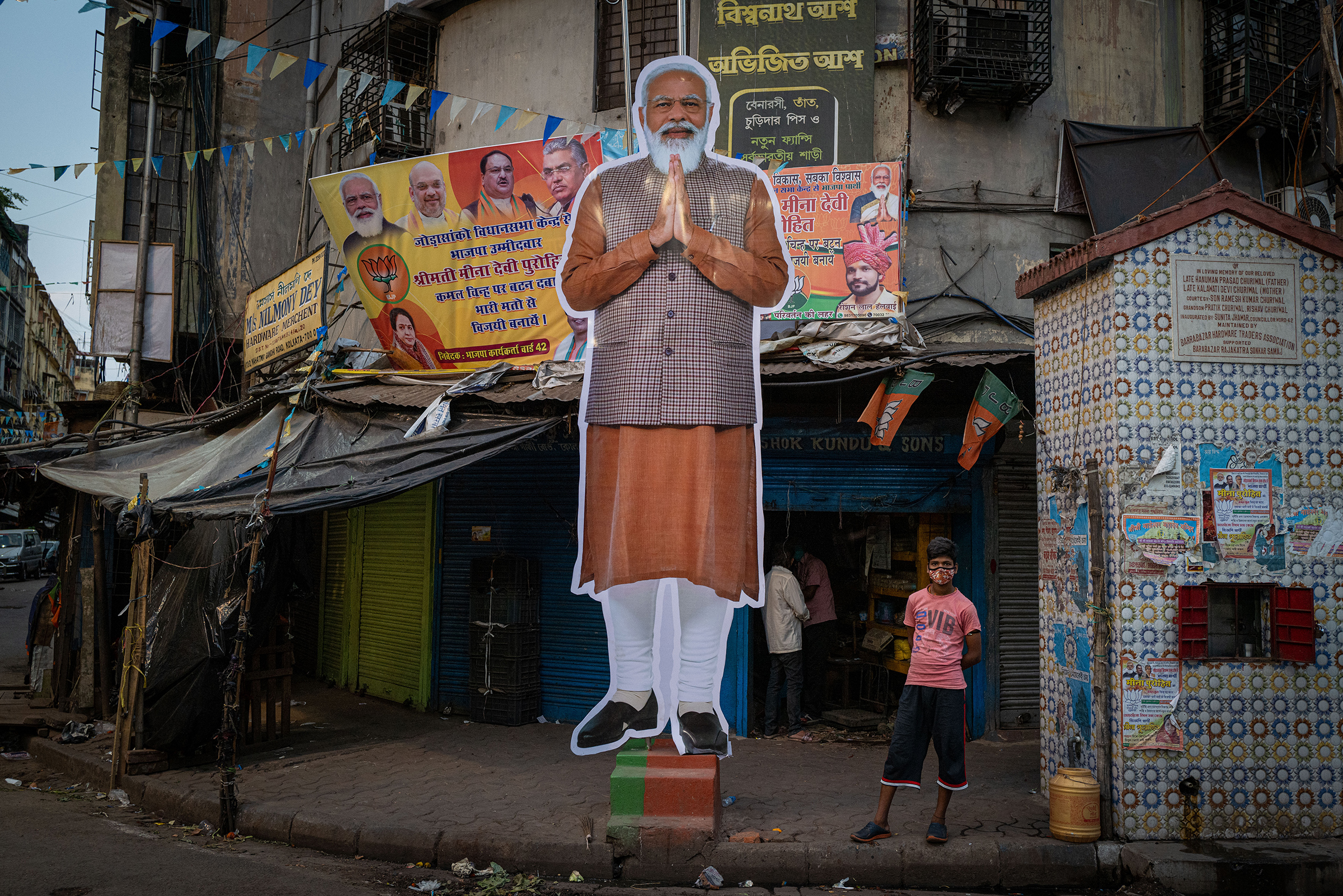On April 24 at 3:22 a.m., a doctor in Delhi’s Guru Tegh Bahadur hospital sent an urgent plea via Whatsapp to a colleague. She had just finished her shift at the COVID-19 ward in the hospital, where her mother was also undergoing treatment. A patient was in critical condition when she finished her shift. If he died, she asked, could his body be sent to the mortuary immediately?
It was an unusual request, she admitted, but these are unusual times. The doctor’s own mother was in a bed next to the critical patient, and she feared that his corpse might be left there throughout the night. Mortuaries throughout the Indian capital are overstretched, the doctor says, and bodies sometimes lie around uncovered among the living till the muscles harden and rigor mortis sets in. If that had happened, “I don’t know if my mother would have been able to survive the trauma,” she tells TIME, requesting anonymity because of fear of reprisal from the hospital administration or the government.
The doctor had already had to beg her superiors to find a bed for her own mother. Despite being a doctor, she says she was unable to find a dose of remdesivir to treat her mother’s symptoms—hospitals were not just running out of oxygen, they were running out of medicines essential to treat patients too, and families were being asked to arrange for it themselves. The doctor ended up paying $139 to a seller, whom she had found through a trusted source to obtain the antiviral drug. After receiving the money, the seller blocked her online. “I am angry,” she says. “But what can you do? Right now we are just focusing on surviving this with whatever resources we can scramble together.”
Read More: India’s COVID-19 Crisis Is Spiraling Out of Control. It Didn’t Have to Be This Way
India is reeling from a second wave of the pandemic that has been spreading with dizzying speed, with a record 414,188 cases and nearly 4,000 deaths officially recorded on May 6, both likely vast underestimates. India’s poor healthcare system—government spending on public healthcare accounts for around 1.26% of GDP—means it’s no surprise that India’s poorest are disproportionately affected by the pandemic. During the comparatively mild first COVID-19 wave, it was also the poorest migrant workers who suffered most from the effects of Prime Minister Narendra Modi’s tough national lockdown. Unable to survive without work in the cities, hundreds died en route to their home villages after the lockdown was announced. But this second wave of COVID-19 has gone further, sparing few families as the virus has spread rapidly through every corner of Indian society.
Among them are the doctors, teachers, IT workers, small business owners and administrators who see themselves as part of India’s middle class, a group that numbers around 600 million, according to economists at the University of Mumbai. While many of them were hit by the recession last year—in March 2021, the Washington-based Pew Research Center found that India’s middle class had shrunk by 32 million people last year—the crisis had not struck home on the same scale. “In the first wave, I knew someone who knew someone who had COVID-19 or died, but now it’s immediate family members,” says Ajoy Kumar, a former Indian Police Service officer and politician for the Congress party. “The degree of separation has changed. We all know someone who has lost their lives.”

It is now largely members of India’s middle class who are pleading for help online, flooding timelines on Facebook and Twitter with requests for hospital beds, oxygen and drugs. Studies show that India’s middle class are its most ardent users of social media: not just educated urban elites, but also middle-income workers from across the country. “These are middle class people with finite resources,” the doctor says of the people she is treating in Delhi. “When they call me they are scared, begging me to save their father, mother, sibling or spouse. I come from a middle class family myself, and I know how they are feeling. Because I feel that way, too. Angry and helpless.”
Faraz Mirza, a healthcare professional based in New Delhi, shares those feelings. When his father had died on April 21 in St. Stephen’s Hospital—one of Delhi’s oldest and largest private hospitals—the official cause was a heart attack, but it was also the same day that the hospital had run out of oxygen. “We will never know how he died—and that will haunt us forever,” he says. “My mother couldn’t even mourn my father, because she was fighting for her own health. The helplessness is consuming us.”
That anger and helplessness may well have political repercussions. It is India’s middle class who forms much of the base of support for Modi’s Bharatiya Janata Party (BJP)—and who poll watchers say are now beginning to turn against him. “[Modi] has disappointed a lot of people that includes a large chunk of the middle class,” says Sanjay Kumar, co-director of Lokniti, an electoral politics research program at the Delhi-based Centre for the Study of Developing Societies. The Prime Minister’s disapproval rating has risen from 12% in August 2019 to 28% in April this year. “They thought he would take charge, do something,” Kumar says. “It appears like he didn’t pay enough attention to the crisis and left the people to manage on their own.”
Indian citizens are now buying medicines and hospital beds and oxygen cylinders at astronomical prices in the black market. According to anecdotal evidence on social media, private chat, and resource groups, oxygen cylinders which would normally retail for little over $100 are being sold for over $2,000 each. And many who agree to those exorbitant prices end up duped: the oxygen and medicines they thought they paid for are never delivered, and the “sellers” stop responding to calls and texts. People have lost their life savings, and yet failed to save their loved ones.
Many blame the government for having failed to curb the second wave and for failing to give adequate support as the crisis has mounted. Now, anger is growing. “How can this be forgotten?” Shivalika Acharya, a former teacher, based in Lucknow tells TIME. “How can Modi be forgiven?”
How India’s middle class became strong Modi supporters
As India’s economy grew in the early part of the century, so did its middle class—defined, by economists at the University of Mumbai, as those able to spend between $2 and $10 a day. Between 2006 and 2016, around 273 million people were lifted out of poverty and joined this new middle class. In the cities, they worked in health, education, and service industries; in rural areas, they were employed in agriculture and construction. Together, they make up nearly half of India’s nearly 1.4-billion population.
“Rapid economic growth in India had created this aspirational class, a forward-looking class, which likes to look toward the future,” says Neeraj Hatekar, a former economics professor at the Mumbai University and co-author of a 2017 paper on the new middle class. Modi’s campaign for prime minister in 2014, which relied heavily on the biographical narrative of his journey from a lowly tea-seller to the highest levels of politics, resonated with this expanding class of the upwardly mobile. His promise of a corruption-free society and better days ahead was more important to them than his divisive political career, or his dedication to Hindu nationalism. “He spoke the people’s language,” Acharya says. “I thought he would bring in change.”
The BJP, Hatekar says, presented Modi as a strong leader who would be able to clamp down on the things that bothered India’s middle class the most: black money, corruption, inflation. “And they took the bait, along with his [Hindu nationalist] agenda,” he says.
Read More: The Survivor’s Guilt of Watching India’s COVID-19 Catastrophe Unfold From Afar
A key group of supporters was young Indian professionals working in the U.S., U.K., and elsewhere abroad, who returned to India ahead of the 2014 election to raise funds and mobilize support for Modi’s candidacy. The intent, says a former banker who moved to India from the U.K in 2013, was to prove that a market-oriented approach would benefit people in India of all classes. “We came here with a common dream to contribute to the idea of a new India, led by the middle classes and not the elites, and we were convinced that Modi would be able to translate our ideas into reality,” says the banker, who is still an active member of the BJP and requested anonymity to speak freely to avoid backlash from other party members. “Modi was tech savvy, business friendly and forward looking and not an elite.”

How a stumbling economy made the COVID-19 crisis worse
The bloom began to come off the rose in 2016, when Modi’s government abruptly announced two banknotes, which comprised almost 90% of the country’s currency in use at the time, would be withdrawn from circulation as part of a stated bid to crack down on black money and corruption. (The idea was that those hoarding illegal or counterfeit cash would have to go to the bank to convert their money.) Modi gave only a few hours’ notice for people to exchange their banknotes for the new denomination ones, precipitating a countrywide scramble at banks and ATMs and a months-long cash shortage.
The demonetization crisis slowed the country’s economic growth the following year, and the middle classes bore most of the brunt, according to Hatekar. “Upward mobility was arrested during this time and many people on the margins fell back into poverty again,” he says. The BJP disputes this, but evidence either way is hard to find—the government has withheld the finding of the National Sample Survey Office data from 2012 to 2018, which would, in theory, help them measure the impact of Modi’s economic policies specifically on the middle class.
But even as the economy wobbled, middle class support of Modi did not seem to waver. Several people acknowledge this in interviews with TIME. “Despite the way it was implemented and the suffering it caused, I thought demonetization would create a transparent system,” says Binayak Mitra, a labor relations manager based in Kolkata. “That the suffering would be for the greater good of the country.”
For some, it was a turning point. “The untold suffering caused by the thoughtless implementation of the demonetization” made Acharya, the teacher, “begin to look more critically at Modi’s policies.”
Experts say that people who would have suffered the consequences of demonetization but convinced themselves that it was in national interest, have begun to reassess their understanding of these policies. From demonetization to the implementation of a new tax regime, it is this class which has borne the brunt.
Yet no one could have foreseen the greater suffering that was still to come. Although the first wave of the pandemic in 2020 did not hit India as badly as feared, a national lockdown introduced by Modi’s government—with just a few hours notice—caused the economy to slow down dramatically. India was among the world’s worst-performing major economies last year, its economy shrinking 7.5% in the July-September quarter of 2020, compared to the previous year. Household income in October 2020 was 12% lower than it was the previous year, while labor force participation decreased from 43% in January 2020 to 40% in November as unemployment rates soared.
The economic burden fell on the poor, but as the Pew report showed, also on the lower middle classes, the 14% of the population who had managed to pull themselves out of poverty but were still on the brink. Their aspirations were quickly dampened by the economic crisis. “If you were a food vendor, you could dream of owning a catering company, or if you were a roadside tailor, you could aspire to have your own tailoring shop,” Hatekar says of the pre-pandemic economic goals of the middle class. “Those channels were badly hit last year.”
Now as the country wrestles with a far more devastating health crisis than in 2020, middle class Indians have been forced to dip into their life savings to ensure basic medical care for their affected family members. “Families are losing breadwinners—this crisis is eating into their financial reserves,” Acharya says.

The political impact of the second COVID-19 wave
General elections won’t be held in India until 2024, but state elections often provide a bellwether for where the country is headed. The BJP has already begun to see disappointments at the ballot box in a handful of state elections, which were held as the second wave began to surge. In West Bengal, a crucial state where Modi was aggressively campaigning this spring as cases were spiking, voters handed him a resounding defeat. Modi also lost the southern states of Kerala and Tamil Nadu. Losing these states would make voices of dissent stronger, even within the BJP, Kumar told TIME.
Although it’s too early to gauge the broader political impact of India’s current crisis, Modi’s approval rating was already on a downward curve before it hit. According to Morning Consult’s Global Leader’s Approval Rating tracker and other polling data, Modi’s approval rating had hovered around 80% from August 2019 to January 2021, before dropping to around 67% by the end of April this year.
State elections early next year will likely give a greater idea of the potential political fallout from the COVID-19 crisis. Among those headed to the polls is the BJP-ruled Uttar Pradesh, India’s largest state with a population bigger than Brazil and which sends the most number of lawmakers to the Indian parliament. Uttar Pradesh has been among the states worst affected by COVID-19 this year, and Chief Minister Yogi Adityanath—a prominent figure in the BJP—may be on rocky ground. He has come under fire after dismissing reports of health care systems collapsing as “rumors” and asking his administration to take strict action against anyone—including confiscating their properties—who dared to post online about oxygen shortages. Whether that will be remembered next year remains to be seen.
Nevertheless, experts say the denialism and mishandling of this crisis might prove to be the final straw for many in Modi’s middle-class base. “This crisis is an important turning point,” Kumar says. “People are beginning to connect the dots.”
The next general election isn’t until 2024, and a lot might happen before then. But it’s hard to see Indians who have lost loved ones holding Modi in the same exalted position as they did a decade before. Acharya, the teacher, says her family, especially her 71-year-old mother, feel let down by a man they believed to be a transformative figure. “My mother used to be so taken with him—when we began to criticize him after demonetization, she would close her ears and ask us to go away to another room because any criticism of Modi pained her,” she says. That has changed with the COVID-19 crisis unfolding all around them, says Acharya, who has been worried for her mother as well as volunteering with a local citizens’ group to track down oxygen, hospital beds, medicines, and food delivery. Sometimes she catches her mother shooting her apologetic looks. “She has come up to me more than once, distressed saying I am sorry I was so blind before.”
More Must-Reads from TIME
- Cybersecurity Experts Are Sounding the Alarm on DOGE
- Meet the 2025 Women of the Year
- The Harsh Truth About Disability Inclusion
- Why Do More Young Adults Have Cancer?
- Colman Domingo Leads With Radical Love
- How to Get Better at Doing Things Alone
- Michelle Zauner Stares Down the Darkness
Contact us at letters@time.com